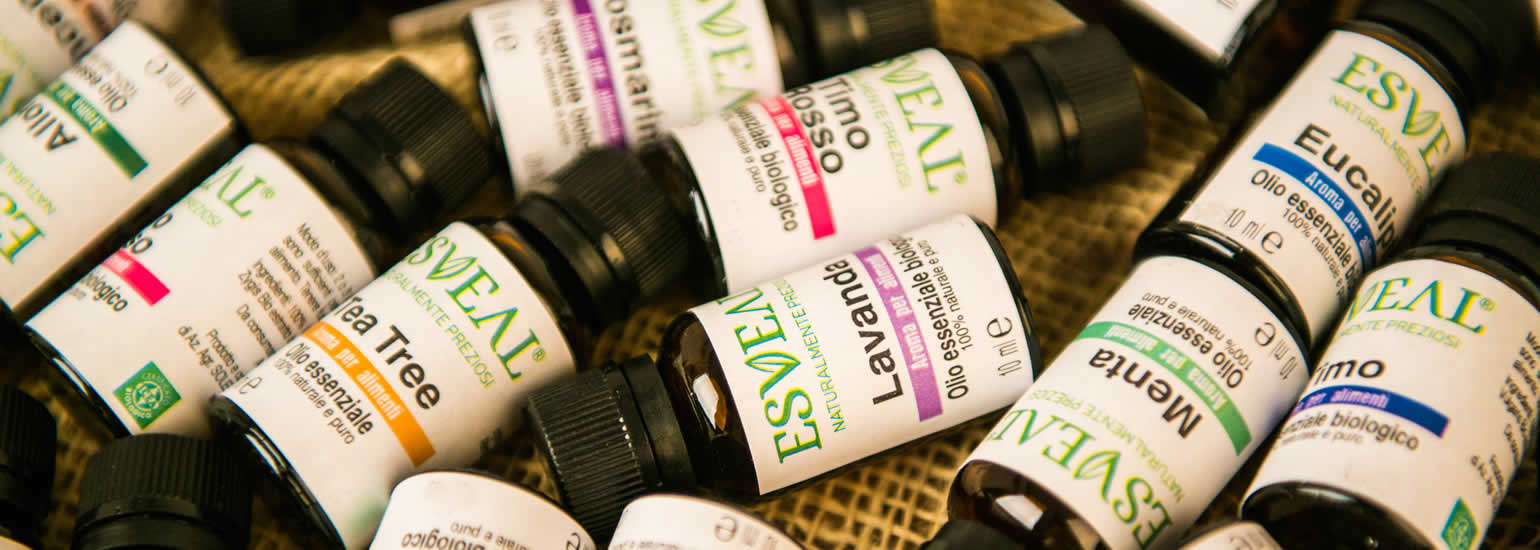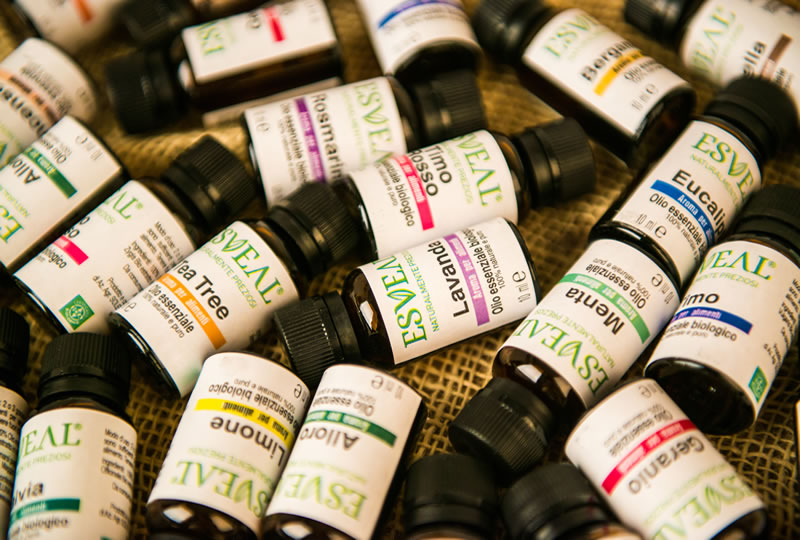
ORGANIC ESSENTIAL OILS
CHARACTERISTICS OF ESSENTIAL OILS.
CHARACTERISTICS OF ESSENTIAL OILS.

.
Related Topics : Good conservation practices for essential oils - characteristics of essential oils - Aromatic waters - Methods of extraction of essential oils - Organic essential oils - Essential oils and astrological functions - Essential oils and olfactory notes - Eucalyptus essential oil - lavender essential oil - lemon essential oil - rosemary essential oil - sage essential oil - thyme essential oil - Operational practice in the extraction of essential oils - Purification and rectification of essential oils - Yield in the extraction of essential oils - Use of essential oils
In the era of sulphonamides, antibiotics, hormones, synthetic products it may seem strange to propose an effective therapeutic method, sometimes even spectacular, with the sole use of plants and/or their Essential Oils, but countless experiences, as well as the renewed interest they are arousing, justify the legitimacy and longevity of treatments with plants and their Essential Oils.
In Antiquity
The Active Principles of plants were unknown in ancient times but their healing properties were known and this was enough. It is very probable that the Ancients could count on some much more acute sensory abilities than those that we modern men have today. There is no doubt that using the virtues of plants to maintain or restore health dates back to antiquity. "Many things, long forgotten, will be reborn," said Horace. In reality, there are no treatments as ancient as Phytotherapy and Aromatherapy; nor that they have provided equal evidence of effectiveness even though, like all things, they have known, from time to time, favor and oblivion. The effectiveness is attested by countless examples such as:
- The extraordinary properties of the onion. The onion suddenly makes the excruciating pain of a wasp sting disappear and is very valuable in diabetes thanks to glucoquinine, a vegetable hormone with hypoglycemic action. The onion's aphrodisiac virtues were used for various purposes. Today we know that onion juice behaves like an antibiotic when confronted with staphylococcus and other microbial germs.
- Sage was considered sacred by the Latins who already used it for its many virtues. Its properties regulate and facilitate menstruation. Only recently has it been explained by the discovery of an oestrogenic substance (i.e. that causes the cycle in women and all females of mammals).
- To soothe the burns, a mixture of Oleolites of lavender, thyme, geranium, rosemary and sage was applied by bandaging it with a few rounds of gauze for simple protection. Usually the next day the problems were solved and the ligaments did not keep the slightest trace of the lesions.
Each era also had its own recipes:
- The Egyptians, masters in the art of embalming, used mixtures based on resins and essences.;
- The Greeks had adopted the use of perfumes and used them to cure themselves. The Romans cultivated aromatic plants;
- In the Middle Ages, women in high society had their own recipes.
For a few hundred years
They began to study and discover the constitutive active ingredients of the various plants. Today we often limit ourselves to rediscover by other means what was already known in ancient times.
For example, it was possible to find out how:
- there is an Active Antibiotic Principle against anthrax disease in the walnut leaf;
- is present in some mugwort species an Active Principle very effective against malaria;
- garlic contains two powerful antibiotics against staphylococcus;
- a single clove has antiseptic properties that allow the preservation of the meat;
- the essence of thyme destroys the anthrax bacillus, having a bactericidal power superior to phenol, and for this reason it has been considered for a long time as the prototype of the antiseptic.
To conclude this overview we remember the liquorice, known above all for its digestive and anti-ulcerous properties and that vegetables, including chervil, parsley, willow, rose mauve and tulip contain hormones..
Phytotherapy and Aromatherapy
Physiotherapy and Aromatherapy have the rare privilege of being both the oldest and the most up-to-date of therapies. In general, however used, fresh, powdered, infused, decoction, oral or external (inhalations, liniment, baths, poultices ...) plants have never disappointed the hopes placed in them. However, the plants will be most effective if they have been harvested at the right time in the right places, if they have been dried and stored correctly, if they are used wisely. The content of Essential Oils (from 0.01 to 15% and more) in certain plant families, harvested fresh and in their optimal balsamic period (maturation), is abundant and of different quantities within the same species depending on the climate and the type of soil in which the plants have grown. Plants living in warm climates, for example, contain on average more Essential Oils than those grown in colder climates. Of particular importance is the "origin" of the aromatic plant. The environmental conditions in which it is grown (nature of the soil, annual/seasonal variations in humidity and temperature, ecological factors, etc.) condition the quantity and composition of the essence it produces. Today, many pharmaceutical preparations use the properties of plants. Many people, often without knowing it, practice daily phyto and aroma therapy.
Therapeutics based on Essential Oils
Therapeutics based on Essential Oils is ancient and if, despite numerous scientific studies, it is not yet possible to conclude with certainty how they act, their therapeutic interest remains.
Unlike many modern drugs, Essential Oils, with very rare exceptions and in the case of predisposed individuals, are not the cause of accidents; also for this reason it encourages the use of Essential Oils.
Many Essential Oils are a mixture of carbides and oxygenated substances and we find here most of the chemical functions of organic materials: hydrogen carbides or terpenes such as thymene; alcohol such as geraniol and linalool; aldehydes such as almond essence and citral; esters such as bomeol and linalite acetates; ketones such as thuone; phenols such as eugenol, thymol and carvacrol...
Volatility contrasts Essential Oils with "fixed" or "fat" oils, which are lipids and cannot be distilled in a steam current. Essential Oils can be contained in the most varied parts of a plant:
*) Flowery summaries (as for Lavender, Rosemary, Sage, Thyme, etc.)
*) Flowers (as for Chamomile, Orange, Jasmine, Violet, Reseda, etc.)
*) Leaves (Laurel, Eucalyptus, Geranium, Sage, Tea Tree, etc.)
*) Fruit (Juniper, etc.)
*) Fruit peel (Bitter orange, Bergamot, Lemon, etc.)
*) Roots and Rhizomes (Ginger, etc.)
*) Barks (Cinnamon, etc.)
*) Legno (Sandalo, ecc.)
*) Seeds (Bitter almond, etc.)
*) Stems (Mint, etc.)
*) Twigs (Cypress, etc.)
*) Gems (Birch, etc.)
*) Resin (Incense, etc.)
In many plants Essential Oils are contained in several parts, for example: flowers and leaves, or leaves and stems, or leaves and twigs. In conifers, for example, we find them in practically all their parts and they can also have different characteristics.
What Essential Oils look like
Essential Oils are generally liquid at room temperature, with an aromatic odour, colourless or pale yellow or orange-yellow and rarely blue or green-blue. The colour tends to become darker with the passage of time due to chemical transformations such as oxidation. They have an acrid spicy taste, are flammable and burn with sooty flame. Their density, with a few exceptions, is less than one or less than water. They are insoluble or almost insoluble in water which, when used for distillation, takes on the odour and is called "Aromatic water".
Essential Oils are easily dragged (vaporized) by water vapor despite their high boiling point (150 - 300 °C). They are soluble in alcohol, ether, organic solvents and fixed oils. Not few Essential Oils appear in the world pharmacopoeias.
Essential Oils are distinguished from greasy and fixed oils that stain the paper permanently, because they volatilize with heat and their stain on the paper disappears quickly.
Essential Oils gradually revealed their secrets with the advent of organic chemistry since the end of the 19th century. However, they have not yet been revealed in their entirety. They offer us more new compounds than all the chemists in the world are able to synthesize in a thousand years of effort. Nevertheless, today we know that they are mixtures of numerous components: terpenes, alcohols, esters, aldehydes, ketones, phenols..
Related Topics : Good conservation practices for essential oils - characteristics of essential oils - Aromatic waters - Methods of extraction of essential oils - Organic essential oils - Essential oils and astrological functions - Essential oils and olfactory notes - Eucalyptus essential oil - lavender essential oil - lemon essential oil - rosemary essential oil - sage essential oil - thyme essential oil - Operational practice in the extraction of essential oils - Purification and rectification of essential oils - Yield in the extraction of essential oils - Use of essential oils